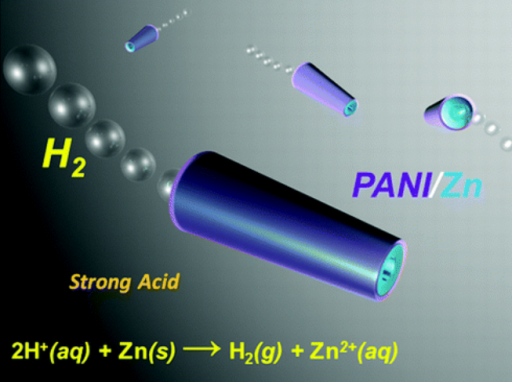Bubble-powered microrockets that zoom through your stomach
February 9, 2012

Tubular polyaniline (PANI)/Zn microrockets display effective autonomous motion in extreme acidic environments, without any additional chemical fuel (credit:ACS)
Department of Nanoengineering, University of California, San Diego scientists have developed a “microrocket” that can propel itself through acidic environments, such as the human stomach, without any external energy source, opening new medical and industrial applications.
Joseph Wang and colleagues explain that self-propelled nano- or microscale motors could have applications in targeted drug delivery or imaging in humans ,or as a way to monitor industrial applications, such as semiconductor processing.
They tested the new microrocket in various acids and in acidified human blood serum. In such environments, a microrocket spontaneously produces bubbles of hydrogen gas, which propels it like the gases spewing out of a rocket’s motor nozzle. The microrocket is ultrafast — it can move farther than 100 times its 0.0004-inch length in just one second.
In contrast to current devices of this kind, the microrocket’s interior is lined with zinc, which is more biocompatible and “greener” than other materials and also generates of the hydrogen bubbles. Wang’s team also developed a version with a magnetic layer, which enabled them to guide the microrockets toward cargo for pick-up, transport, and release.
Ref.: Wei Gao, Aysegul Uygun, and Joseph Wang, Hydrogen-Bubble-Propelled Zinc-Based Microrockets in Strongly Acidic Media, Journal of the American Chemical Society, 2012; [DOI:10.1021/ja210874s]